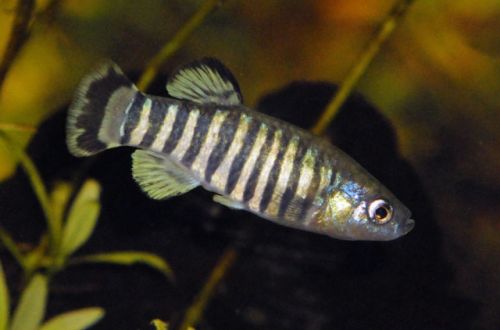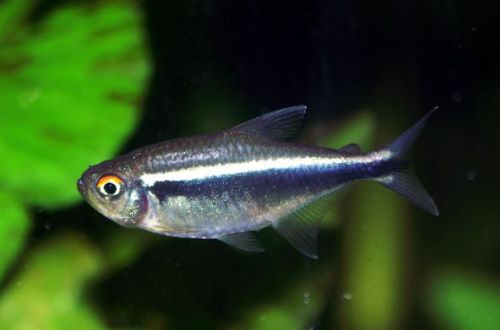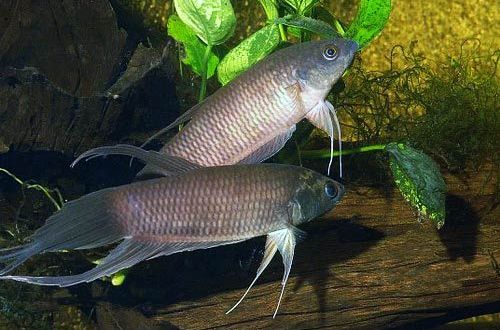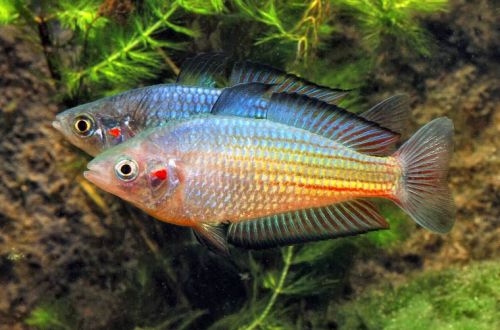
Azraq Tooth Killer
The Azraq tooth killer, scientific name Aphanius sirhani, belongs to the Cyprinodontidae family. A beautiful original fish with the tragic fate of its relatives in the wild, the natural range of which practically disappeared in the early 90s due to human activities. At present, the situation has stabilized thanks to the efforts of international environmental organizations.

Habitat
The toothed carp hails from the ancient oasis of Azraq in the Syrian desert, on the territory of modern Jordan. For many centuries, the oasis was the only source of fresh water in this region and a key transshipment point for caravan routes. Until the 1980s, its area was more than 12 km² of wetlands with diverse vegetation and numerous animal species such as lions, cheetahs, rhinos, hippos, elephants, ostriches and other large mammals (they became extinct much earlier than the 80s).
The oasis was replenished from two large underground sources, but since the 1960s, numerous deep pumps began to be built to supply Amman, as a result, the water level dropped, and already in 1992 the sources completely dried up. The land area has decreased tenfold, most of the flora and fauna have disappeared. International environmental organizations sounded the alarm, and in the 2000s, a program began to save the surviving species and restore the oasis to at least 10% of its original area through artificial water injection. Now there is a protected Azraq nature reserve.
Description
A miniature somewhat elongated fish, larger females reach about 5 cm in length, the color is pale silver with several black spots on the body. Males are smaller and more colorful, the body pattern consists of alternating vertical dark and light stripes, the fins are yellow with a wide black edging, shifted closer to the tail.
Food
An omnivorous species, in nature it feeds on small aquatic crustaceans, worms, insects and their larvae and other zooplankton, as well as algae and other vegetation. In the aquarium, the daily diet should combine dry and meat foods (live or frozen daphnia, brine shrimp, bloodworms), as well as herbal supplements, such as flakes from spirulina algae. Proper nutrition is of great importance during reproduction, the lack of protein and plant components can lead to sad consequences.
Maintenance and care
It is easy to keep, in warm countries it is successfully bred in open water. In a home aquarium, a simple set of equipment is sufficient, consisting of a lighting system and a filter with a weak flow rate, since the fish does not tolerate strong and even moderate currents, heating is not required. A flock of fish will feel great in a tank from 100 liters, the design should provide for places for shelters in the form of a pile of stones, snags or decorative objects (artificial castles, sunken ships, etc.). They will make an excellent refuge for females and subdominant males during spawning. Any soil, preferably from coarse sand or small pebbles. Various mosses, ferns and some hardy plants such as Hornwort can be used as plants. The content is reduced to the weekly replacement of part of the water (about 10%) with fresh and periodic cleaning of the soil as organic waste accumulates.
water conditions
The Azraq tooth killer prefers slightly alkaline or neutral pH and high levels of dGH. Slightly acidic soft water is deadly for him. The optimum temperature range is from 10 to 30°C, while in the winter months it should not exceed 20°C, otherwise life expectancy is significantly reduced and the ability to reproduce is lost.
Behavior and Compatibility
The specific requirements for the composition of the water and aggressive behavior during spawning make this fish not the best candidate for sharing in a general aquarium, so keeping a community of its own species becomes the best option. Males are very belligerent towards each other, especially during the mating season, the alpha male will soon stand out, the rest will have to catch his eye as little as possible. To avoid intraspecific conflicts, it is recommended to keep one male and 2-3 females together.
Breeding / breeding
Breeding at home is not difficult if the aquarium is properly set up and the water conditions are right. The barrack period peaks in the summer and early autumn months. During spawning, the male becomes more colorful, chooses a certain territory, where he invites the females. Any opponent inadvertently approaching his border will be immediately expelled. Sometimes the male is too active and the females have to take cover if they are not yet ready to lay their eggs.
Usually they lay one egg at a time or in a small bunch over a period of time, attaching them to plants with thin threads. Parents after spawning do not show concern for offspring and may even eat their own eggs, so they are carefully transferred along with the plant to a separate tank with identical water conditions. The incubation period lasts from 6 to 14 days, depending on the water temperature, the juveniles feed on brine shrimp nauplii and other microfoods, such as flakes or granules ground into flour.





